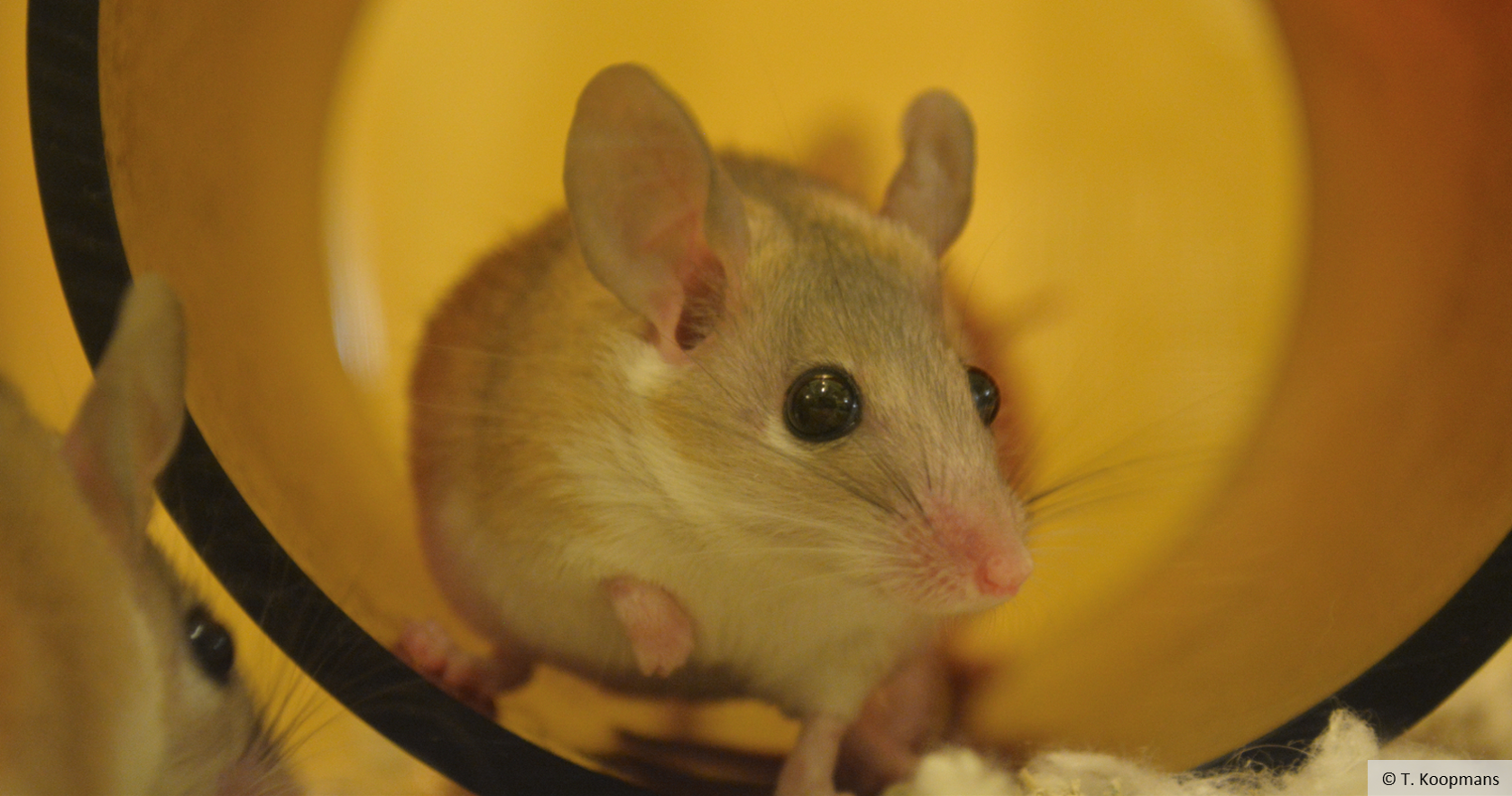Main content
Top content

02.05.2023
Wound healing without scarring: A molecular switch activates tissue regeneration
Spiny mice possess an extraordinary ability for mammals: they can repair injured tissue without forming scars. A joint study by researchers led by Prof. Kerstin Bartscherer (AG Animal Physiology) and Prof. Ashley Seifert (University of Kentucky) provides new insights into the molecular basis of this phenomenon - which could one day prove valuable for the treatment of human diseases.
When our skin gets injured, that usually leaves long-term traces: the wound heals, but a scar forms. Most people have probably observed this on their own bodies at some point.
But scars do not only develop where we can see them. For example, as a result of a heart attack or lung disease, damaged tissue is often replaced by collagen-rich scar tissue. This can considerably restrict the function of the organs – with life-threatening consequences. In fact, it is estimated that around 50 percent of people die from a disease associated with scarring.
Wound healing without scars - the "superpower" of spiny mice
The ability not only to repair tissue, but to regenerate it, is therefore of great interest to medical research. And indeed, there are animals that are quite a bit ahead of us in this respect: For example, planarians can regrow large parts of their bodies, and some amphibians can regrow entire limbs.
For a few years, it has been known that there are also mammals that have amazing regenerative abilities: the spiny mice. If tissue damage occurs in individuals of this rodent genus, it heals without scars forming. In a recent study, researchers led by Osnabrück biologist Kerstin Bartscherer investigated the molecular basis of this process. To this end, they conducted several experiments at the Hubrecht Institute in Utrecht and at the University of Kentucky, in collaboration with Ashley Seifert.
The ERK signaling pathway and tissue regeneration
In earlier studies, Bartscherer and her team had found that the so-called ERK signaling pathway is crucial for the activation of regeneration processes in planarians. ERK stands for extracellular signal-regulated kinase and refers to a group of enzymes that assume a key function in animal cells: They influence the activity or location of other proteins and thereby regulate a variety of cellular processes. In the current study, the researchers investigated the extent to which the ERK signaling pathway is also involved in tissue regeneration in spiny mice.
Indeed, the team found that there was increased ERK activity in the cells of spiny mice after a small injury. However, this was also the case in house mice – which, like us, are prone to scarring. However, the picture changed after a few days: While ERK activity decreased in the house mice during wound healing, it remained elevated in the spiny mice. This suggested that the ERK signaling pathway might be important for tissue regeneration.
Experimental manipulation of the ERK signaling pathway demonstrates its role as a molecular switch
To learn more about this, the researchers conducted an experiment: They inhibited ERK activity in spiny mice during the healing of an ear wound and analyzed the consequences. Indeed, by blocking the signaling pathway, the regenerative capacity of the spiny mice could be effectively "switched off". As a result of the reduced ERK activity, there was a decrease in new tissue formation and instead more collagen-containing scar tissue was produced.
The next question the team asked itself: What would happen if ERK activity were artificially enhanced in the course of wound healing in house mice? The researchers conducted an experiment on this as well – with astounding results: The house mice showed clear signs of recovery of the destroyed tissue after an ear injury. Hair follicles even formed again, which is not the case with the usual scarring.
The molecular switch and its potential medical significance
Thus, the experiments show that the ERK signaling pathway determines tissue regeneration not only in planarians, but also in mammals. By flipping this molecular switch, the team was not only able to inhibit the regenerative abilities of spiny mice, but even activate them in house mice, which normally do not possess it.
In this respect, the findings could also prove valuable from a medical perspective in the long term - for example, for the treatment of tissue damage to the heart, lungs or spine. But according to Kerstin Bartscherer, there is still a long way to go. "We do have initial evidence that ERK activity is also elevated in the spiny mouse heart for a long time after an infarction," says Bartscherer. "However, whether this signaling pathway also plays such an important role there as it does in the skin remains to be seen in future studies."
Publication:
Tomasso, A.; Koopmans, T.; Lijnzaad, P.; Barscherer, K.* & Seifert, A. W.*: An ERK-dependent molecular switch antagonizes fibrosis and promotes regeneration in spiny mice (Acomys).
Science Advances 9.
The work was supported by a grant from the European Research Council (ERC-StG-IniReg) to Kerstin Bartscherer.







